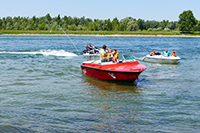 Municipalities, the governing body of a district or community, employ a variety of workers. Employment practices liability insurance protects those employees and the municipality, making it an essential product. If you operate or work for a municipality, learn more about municipalities employment practices liability insurance.
Municipalities, the governing body of a district or community, employ a variety of workers. Employment practices liability insurance protects those employees and the municipality, making it an essential product. If you operate or work for a municipality, learn more about municipalities employment practices liability insurance.
What is Employment Practices Liability Insurance?
Also known as EPLI, employment practices liability insurance covers numerous employees, including municipality directors, officers, management personnel and employees. It’s designed to cover legal rights violation claims employees may make against their employer, the municipality. An EPLI policy can cover claims related to:
- Breach of employment contract
- Defamation
- Deprivation of career opportunity
- Discrimination
- Failure to employ or promote
- Invasion of privacy
- Mismanagement of employee benefits
- Negligent evaluation
- Retaliation
- Sexual harassment in all forms
- Wrongful discipline
- Wrongful infliction of emotional or other distress
- Wrongful termination
When you file an EPLI claim, the policy reimburses your municipality for the legal costs of defending the lawsuit in court. It also covers judgments and settlements whether you win or lose the case.
In most cases, an EPLI does not cover civil or criminal fines, punitive damages or liabilities covered by other insurance policies such as workers compensation. Other exclusions typically include bodily injury, property damage or intentional and dishonest acts.
Review your municipality’s EPLI policy for coverage and exclusion details. You may be able to customize your policy based on your municipality and employees’ unique needs.
How to Purchase EPLI
When purchasing municipalities EPLI, choose a reputable insurance company with an excellent customer service reputation and reviews. The company should understand your unique needs and be available when you have questions, want a consultation or need to file a claim. The right insurance and company gives you peace of mind and valuable protection.
In most cases, your municipality can purchase EPLI in several ways.
- Purchase it as part of your management liability package policy.
- Purchase it as stand-alone coverage.
Discuss your options with your insurance company to ensure all your municipality employees’ needs are met and reduce your municipality’s liability.
How Much Does EPLI Cost?
Several factors affect the cost of an EPLI policy. They include:
- Your type of business
- Number of employees
- Various risk factors, including previous employment practices lawsuits
For specifics on the cost of your municipality EPLI, talk to your insurance company or agent. They can create a customize quote for your municipality, employees and needs.
Municipalities employment practices liability insurance offers valuable protection. Understand the coverage and ensure you purchase adequate coverage.















